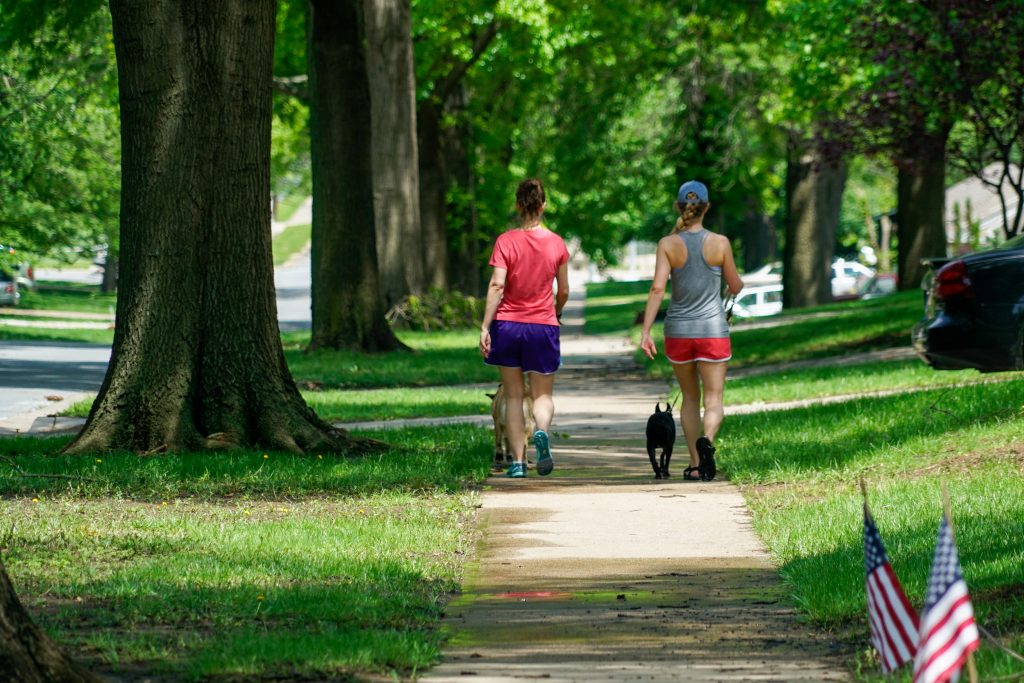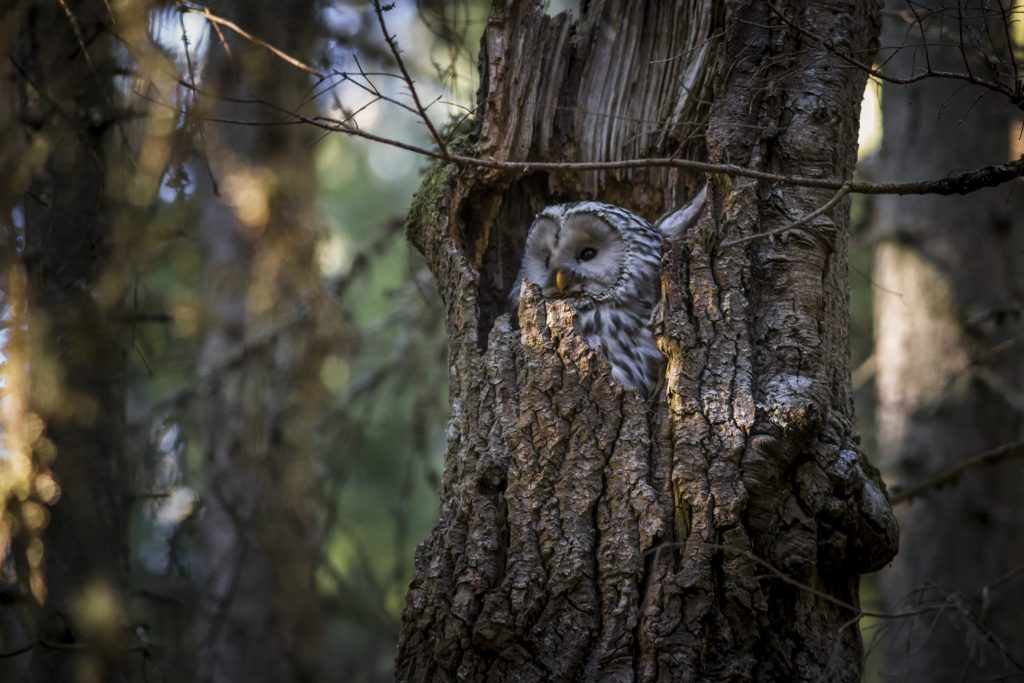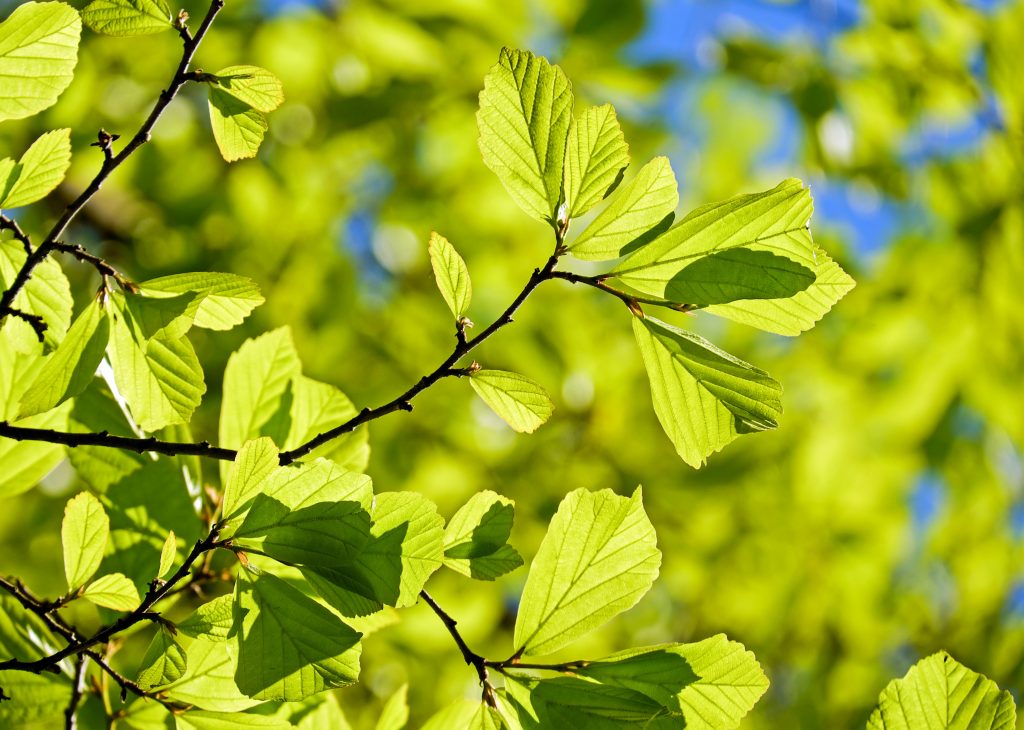What Else are Trees Doing?

Trees are incredibly valuable for a number of reasons besides their ability to intercept stormwater and clean water. First, trees are just nice to have around. Studies have shown that the presence of trees helps reduce stress and even reduce crime. They help improve moods and homes with trees typically have higher property values. So, what else are they doing?
Habitat and Biodiversity

Biodiversity—the complex web of living organisms—is critical to life on earth. Trees are an essential part of that web. Take a native oak tree. In its home range, it can support nearly 500 different insects, which in turn support an array of bird and other animal populations. A tree from Europe or Asia may only provide habitat for 10 different types of insects. This may not sound like a big deal, but it has a massive impact! Close to 90% of butterfly and moth larvae eat only certain plants or groups of plants, and these are inevitably the only species they have lived around for millennia. Then, consider that 96% of birds rear their young on these same insects. Take away or even fragment the habitat, and the biodiversity that keeps the environment balanced is lost.
Native trees don’t just provide habitat for birds and insects. They also provide berries, acorns, nuts, and more for many other types of animals, as well as nesting spots and materials, cover, even water.
Downed trees and limbs are also important for wildlife. Lots of little critters depend on ground level trunks and branches to make their dwellings and attract their food. If you have space, consider leaving this sort of debris on the ground. Check your local codes to make sure downed limbs don’t violate ordinances.
The Indiana Wildlife Federation and some soil and water conservation districts offer certifications for backyard habitat creations. Most programs require one to focus their habitat around providing food, water, shelter, and a place to raise young. To find out more about backyard habitat/conservation programs and what you need to do to have your yard certified, check out the following pages.
- National Wildlife Federation Garden for Wildlife
- Indiana Wildlife Federation Wildlife Habitat
- Hamilton County Soil and Water Conservation District – Backyard Conservation Brochure
Carbon Dioxide Sequestration

As carbon dioxide, or CO2, builds up in the atmosphere, the earth gets hotter. Trees actually consume CO2 and convert it into oxygen, which we all breathe. But humans continue to log forests at an alarming rate, reducing the capacity for the earth to manage the increasing amount of CO2 we are producing. Trees can actually absorb as much as 48 pounds of carbon dioxide per year. One tree can sequester 1 ton of carbon dioxide by the time it reaches 40 years old. A typical passenger car emits about 4-6 tons of CO2 in a year. Whatever else you can do, planting trees is clearly very important.
Air Pollution
Trees produce oxygen and filter airborne particles, helping to reduce air pollution. The oxygen a tree produces also dilutes atmospheric pollution. More, airborne particulate pollution is also trapped on the surface of leaves, which helps filter it out of the air. In a process called “air washing”, the heightened humidity around plants condenses around pollutants and causes them to settle out of the air. Some studies even indicate that plants directly absorb certain pollutants like sulfur dioxide and nitrogen dioxide. A large front yard tree absorbs approximately 10 lbs of pollutants per year, including 4 lbs of ozone and 3 pounds of particulates (dust, ash, pollen, and smoke).
Temperature Regulation

There is a lot of talk these days about the planet getting warmer, but have you ever heard of an urban heat island? This condition refers to the way urban areas gather and hold onto more heat than non-urbanized areas. This has a lot to do with more hard and dark surfaces like roofs and parking lots, because dark colors absorb more heat than light colors. The fact that they’re hard means they aren’t green with trees! Shade trees help cool urban heat islands and reduce energy costs and consumption.
- Trees placed strategically around buildings can reduce air conditioning needs by 30% and save 20–50% in energy used for heating.
- A shade tree may block 80 to 90% of the sun’s rays from passing through its leaves.
- The daily moisture transpired from one large tree can have the cooling effect of five average room air conditioners running 20 hours a day.
One study showed that the air in a two-acre oak forest was 7 to 9 degrees cooler than air above a nearby grass fairway and 37 to 39 degrees cooler than an asphalt parking lot.
Soil Erosion Protection
Trees can help reduce soil erosion and surface runoff, leading to a steadier and cleaner water supply. Trees protect the soil by breaking the fall of raindrops, absorbing water through their roots, covering the ground with protective humus, slowing runoff, and knotting the soil with roots. On the other hand, a square mile of land stripped for development may lose 25,000 to 50,000 tons of soil in a year. The resulting sediment can drastically reduce water quality. Moreover, the slow release of water from forested lands gives way to wasteful runoff and flooding, followed by parched drought conditions.
Local Products

A 2010 study by Purdue University and the Indiana Department of Natural Resources found that Indiana’s forest and hardwood industry had a $16.6 billion impact on the State’s economy and employed more than 35,000 people. It’s easy to see why: each year, one person uses wood and paper products equivalent to a 100-foot tree 18 inches in diameter.
But building supplies aren’t the only products of our forests. While Indiana is no longer a major source of maple syrup, there are still plenty of producers making sure you can get your pancake fix done right while keeping your dollars local.
Aesthetics
It’s hard to overestimate how much better trees make our community. One easily overlooked area, though, is aesthetics. It’s a hard thing to put numbers to, but it’s easy to see the difference between an area with trees and one without. And, in fact, people have managed to put numbers to the aesthetic impact of trees in a community. The Arbor Day Foundation reviewed current studies and found these awesome facts:
- Office workers with a view of trees report significantly less stress and more satisfaction.
- In Baltimore, a 10% increase in tree canopy corresponded to a 12% decrease in crime.
- In Fulton County (Atlanta), Georgia, mature trees positively influenced home sale prices. Homes sold for nearly $105,000 more in neighborhoods with mature trees.